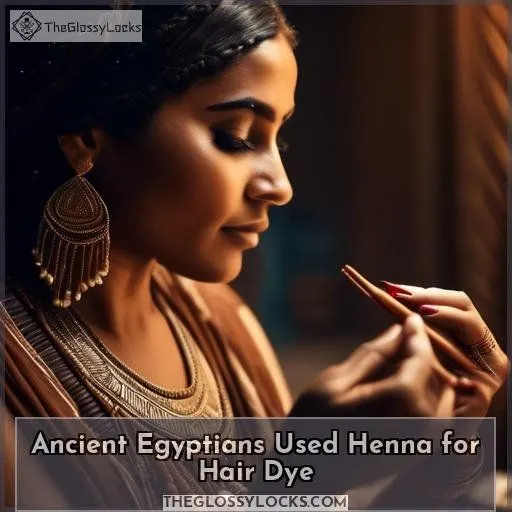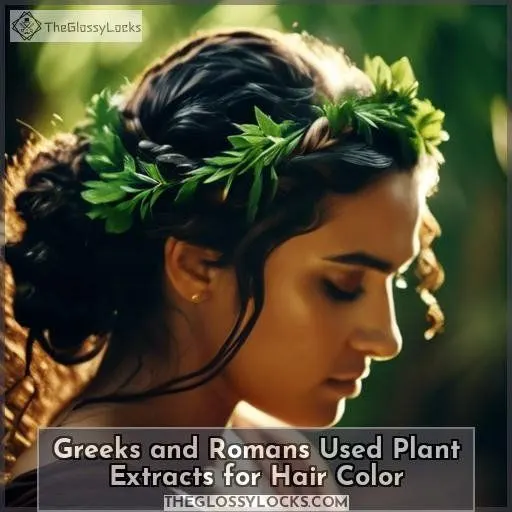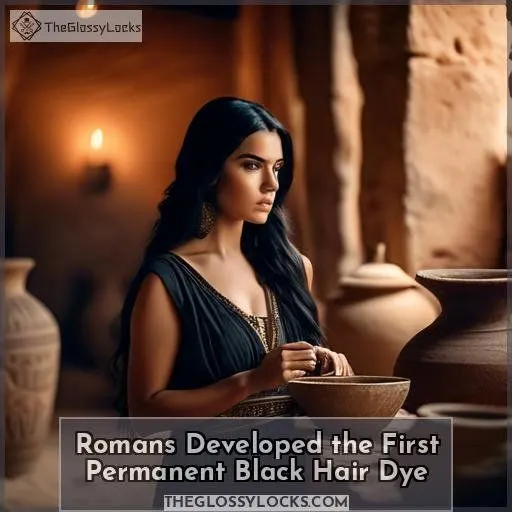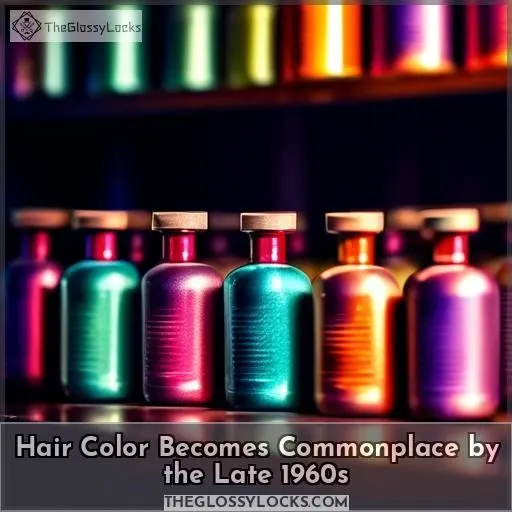This site is supported by our readers. We may earn a commission, at no cost to you, if you purchase through links.

You’re wondering about the origins of hair dye, a practice steeped in ancient roots.
While the Egyptians used henna as early as 2100 BCE, the first permanent hair coloring emerged in ancient Rome with a toxic black dye made from lead oxide.
Major breakthroughs came in the 1800s when chemists like August Hoffman derived PPD, revolutionizing longevity and vibrancy.
By the late 1960s, at-home dye kits allowed hair color experimentation for all.
But this quick answer merely scratches the surface – to fully appreciate hair dye’s colorful history, the details await.
Table Of Contents
- Key Takeaways
- When Was Hair Dye Invented?
- Ancient Egyptians Used Henna for Hair Dye
- Greeks and Romans Used Plant Extracts for Hair Color
- Romans Developed the First Permanent Black Hair Dye
- August Hoffman Derived PPD, Foundation for Modern Hair Dyes
- Hair Color Becomes Commonplace by the Late 1960s
- Conclusion
Key Takeaways
- Hair dye can be traced back to ancient Egypt, where henna was used for cosmetic purposes and social status.
- The first permanent hair dye was developed in ancient Rome, using a toxic black dye made from lead oxide.
- Major breakthroughs in hair dye came in the 1800s, with the discovery of PPD by August Wilhelm von Hofmann, revolutionizing the industry.
- By the late 1960s, at-home hair dye kits became popular, allowing for easy experimentation with various shades and styles.
When Was Hair Dye Invented?
Hair dye was invented by accident in 1863 when English chemist William Henry Perkin discovered the first synthetic dye, mauveine, while trying to create a cure for malaria. However, the first synthetic hair dye specifically designed for human use was created by French chemist Eugène Schueller in 1907, which he called Auréole.
Ancient Egyptians Used Henna for Hair Dye
Ancient Egyptians utilized henna for hair dye, a practice that has been traced back to the Old Kingdom around 2100 BCE.
Henna was used to color gray hair and was an integral part of their beauty and grooming rituals.
The use of henna for hair dye wasn’t only for cosmetic purposes but also held social significance, as it was a way to demonstrate one’s status and wealth.
The evolution of hair dyeing techniques in ancient Egypt was influenced by societal norms and fashion trends, with different classes of individuals adopting distinct hairstyles.
Greeks and Romans Used Plant Extracts for Hair Color
In ancient Greece and Rome, hair dyeing was a common practice used for various purposes. These included modifying hair color, covering gray hair, and signifying social status.
Greek hair fashion favored long hair for both men and women. Women often wore their hair in a bun or knot, while men wore their hair in a headband.
Roman hair laws were more stringent. Prostitutes were required to have blonde hair, achieved through plant ashes or nuts.
The Greeks and Romans used plant extracts to create temporary dyes. The Romans developed the first permanent black hair dye, which was made from lead and sulfur powder.
Romans Developed the First Permanent Black Hair Dye
As you’ve seen, the Greeks and Romans were no strangers to hair color experimentation. But did you know they were the pioneers of permanent black hair dye? Here’s a snapshot:
- Roman ingenuity led to the first long-lasting hair dye, a bold jet black that stood the test of time.
- Their formula, a mix of lead oxide and calcium hydroxide, was a game-changer for hair dye trends.
- Yet, safety wasn’t on the menu—this concoction was toxic, a far cry from today’s hair dye tips.
August Hoffman Derived PPD, Foundation for Modern Hair Dyes
As we trace the path from early mixtures to the emergence of contemporary hair dyes, let’s examine a defining moment: when August Wilhelm von Hoffman introduced PPD. This chemical became the cornerstone of the hair color transformation, providing longevity and richness of hue once thought impossible. However, with great influence comes great accountability—safety concerns surrounding PPD have ignited a search for other options. Let’s investigate this transformative element in the realm of hair.
| Year | Milestone | Impact |
|---|---|---|
| 1863 | Discovery of PPD | Revolutionized hair dye |
| 20th Century | PPD in Commercial Dyes | Birth of modern hair dyes |
| Ongoing | Safety Concerns | Push for safer alternatives |
| Present | Alternatives Explored | Evolution of hair dye types |
| Future | Potential Innovations | Safer, vibrant hair colors |
Hair Color Becomes Commonplace by the Late 1960s
Hair color became commonplace by the late 1960s, with women experimenting with different shades of red.
Companies creating products that allowed people to try different hair colors from their homes.
This period saw the rise of at-home hair dye kits, which democratized hair color and led to an increase in experimentation and creativity.
The trend of imitating natural red hair color was carried to the ’60s.
Women started experimenting with various shades of red.
Highlights also gained popularity during this time.
The use of golden-toned brown hair color was a popular choice.
Additionally, frosted tips were a big hair coloring trend in the ’70s.
Conclusion
Centuries after ancient civilizations harnessed hair color’s transformative power, you enjoy the ease of modern hair dye.
The roots of hair dye can be traced back millennia, but the real revolution began in the 1800s with scientific advancements like Hoffman’s PPD revelation.
Now, vibrant at-home kits allow you to effortlessly adopt your desired shade, perpetuating this timeless tradition of self-expression through tresses.
When was hair dye invented?








